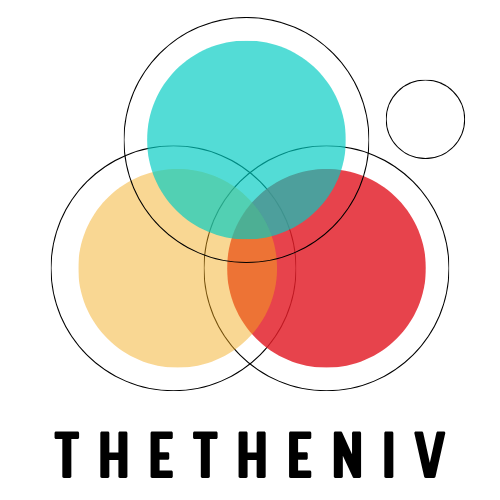Anúncios
Can a tighter plan turn your best ideas into real products customers love?
You’ll get a clear view of how an innovation strategy links ideas to execution and market fit. This section frames what to expect and how to use the rest of the article.
The right strategy helps your company pick where to play, assess feasibility, and protect speed. Firms like Amazon, Apple, Uber, Airbnb, Netflix, and Stripe show how a focused plan delivers customer value and business growth.
We’ll outline simple tools, trade-offs between improving offerings and entering new markets, and governance that keeps creativity alive.
Read on to learn how to measure early signals of success, adapt to your market, and bring cross-functional teams together. Use these ideas as analysis to test, not as guaranteed formulas.
Anúncios
Introduction: Why innovation strategies matter now
Innovation strategies matter now because fast-changing markets and shifting customer needs leave little room for scattered effort.
Your strategy should be a living plan that clarifies goals, aligns teams, and makes the process from ideas to launch visible.
Without a clear plan, projects stall and resources diffuse across too many experiments. Focus on unmet customer needs, document assumptions, and build short learning loops that rely on data and interviews.
Anúncios
Measure and adapt as you go: set clear metrics, run quick tests, and stop what doesn’t show traction. When stakes are high, consult experts and revisit choices as the market shifts. For a concise framework on practical planning, see what is an innovation strategy.
- Choose focus areas where needs and market signals align.
- Align business goals so your team can turn ideas into measurable outcomes.
- Balance small bets with bolder moves to protect core delivery while pursuing growth.
The state of innovation in 2025: context, challenges, and opportunity
Market shifts and faster tech cycles make clear priorities a business essential this year. You face higher buyer expectations and rapid diffusion of new tools. That raises the cost of being unfocused.
Why efforts stall: teams chase many ideas at once, problems stay fuzzy, and timelines slip when trade-offs aren’t agreed. Without a concise decision model, resources spread thin and time-to-market grows.
What leading companies get right: they set a small number of goals and clear decision rules so ideas, data, and time align with customer needs. They define segments, tie choices to the business model, and mix near-term fixes with longer bets.
“Clear roles and funding gates tied to learning speed up choices and free teams to solve real problems.”
- Use a simple model to link research to funding decisions.
- Keep cross-functional cadences so handoffs don’t cause delays.
- Communicate why some ideas stop; it builds trust and focus.
innovation strategies you can apply today
Start small with methods that surface real problems customers care about and let data guide your next moves.
Customer needs discovery at scale: combine product analytics with short interviews. Map jobs-to-be-done, pain points, and gains. Then size demand in your market so you know where to focus.
Value proposition design with CO-STAR
Use CO-STAR to clarify Customer, Opportunity, Solution, Team, Advantage, and Results. That sharpens your value proposition and makes the proposition narrative simple for teams and stakeholders.
Business model and portfolio moves
Try business model innovation by piloting subscriptions, usage pricing, or marketplaces that suit your base. Place each idea on an Innovation Ambition Matrix to balance core fixes and longer bets.
Lean tests, process changes, and alignment
Run lean experiments: state a hypothesis, set success criteria, and test with small samples to limit wasted development time.
Target process improvements that cut lead time and lift customer experience. Use a Strategy Choice Cascade to align where you play, how you win, and the capabilities you need.
“Every test should return evidence that updates your plan; stop bets that don’t solve real problems early.”
Types of innovation and when to use them
Not every idea needs the same path; the type you choose shapes investment, speed, and outcomes.

Sustaining gains for current users
Use sustaining efforts when your customer base asks for better performance, reliability, or convenience from an existing product.
These moves improve margins and keep revenue steady while you test other bets.
Reaching new or over-served segments
Disruptive innovation targets underserved or non-consuming groups with simpler, lower-cost offers.
Start small, verify demand in a fresh market, and watch how adoption can push the offer into the mainstream.
Building entirely new markets
Radical innovation pairs new technology and a new model to enter an entirely new market.
Pursue this only when you can prove a viable business model and a clear value proposition before scaling.
Reconfiguring systems across the organization
Architectural change rewires processes, platforms, and teams so systems deliver value in new ways.
Choose this when silos or fragmented tech stop you from moving faster or serving customers better.
- Match each type to your business goals, risk appetite, and capabilities.
- Check needs and willingness to pay before scaling any move.
- Keep a balanced portfolio so sustaining work funds longer-cycle bets.
- Define measurable learning milestones; success is traction, not activity volume.
“Capture how each move affects your business model, margins, and operating cadence.”
Use these types to build an innovation strategy that fits your team and market. Evaluate trade-offs, set clear milestones, and adjust the plan as you learn.
From idea to impact: a practical roadmap from concept to launch
A simple, evidence-first workflow helps you move from brainstorming to customer value fast. Start by combining usage data, support logs, and short interviews to surface new ideas that answer real customer needs.
Idea generation and evaluation: feasibility, desirability, viability
Generate ideas from data and conversations, then screen them quickly for desirability. Use a tiny scorecard to compare fit to customer needs, cost, differentiation, and time to market.
Define clear gates: list the evidence needed to pass each stage. Move forward only when you reduce risk with validated learning.
Implementation and execution: resourcing, partners, and delivery
Resource implementation early. Align product, engineering, and vendors so your development plan is realistic for the organization and the business.
Break work into short increments with acceptance criteria so releases are predictable and quality stays high.
Iterate with evidence: monitoring, metrics, and adaptive planning
Track defects alongside customer outcomes to link build quality to adoption. Watch leading indicators like sign-ups, activation, and retention to learn fast.
- Hold regular reviews to compare progress to goals and adapt based on evidence.
- Document the model innovation choices and dependencies so leadership can remove blockers.
- Use expert input for high-stakes decisions and keep ethical risk checks in place.
“Stage decisions by evidence, not hope; that keeps teams focused and reduces wasted time.”
Metrics and governance: measuring progress without stifling creativity
Measure what helps teams learn quickly, not just what looks good on a dashboard. Keep governance slim so you protect creative momentum while managing risk. Define what success and learning look like before you scale any experiment.
Outcome and learning metrics
Prioritize fast signals. Track time to insight, activation, and early adoption as primary signs of product–market fit.
- Time to insight: how long until an experiment gives useful evidence.
- Adoption proxies: activation rates, retention at short intervals.
- ROI proxies: unit economics or cohort payback used early to avoid vanity metrics.
Stage gates and guardrails
Make gates evidence-based, not bureaucratic. Require specific de-risking facts to move forward.
- Define required evidence for each gate and keep the process lightweight.
- Set guardrails for privacy, security, and brand risk so experiments stay safe.
- Use small batch sizes in development to reduce cost of changes and speed feedback.
Cross-functional collaboration and incentives
Align product, engineering, design, marketing, and finance so decisions happen faster.
- Reward learning velocity and customer value, not just feature output.
- Build a shared model of costs and benefits so teams and finance speak the same language.
- Run regular portfolio reviews to compare goals to performance and reallocate funding as facts change.
“Stage decisions by evidence, not hope; that keeps teams focused and reduces wasted time.”
Real-world examples: how companies turn strategy into results
Seeing how leading firms applied clear choices helps you map a path for your team. These short cases show practical moves you can test in your context.
Amazon
Business model evolution: Amazon moved from books to a broad marketplace and tied marketplace economics to Prime subscriptions.
This aligned convenience and value, while opening new market categories like cloud and video.
Apple
Apple used customer-centric design to make complex technology simple. The iPhone united hardware, software, and service into a clear product people trust.
Uber & Airbnb
Both firms show how a disruptive innovation expands the customer base by cutting friction. Mobile apps and dynamic pricing or hosted listings gave more choice in transport and lodging.
Netflix & Stripe
Netflix combined a subscription model with streaming and original content to scale engagement. Stripe simplified payments for developers, a model innovation that sped online growth.
“Match your approach to capabilities and timing; adapt as the market shifts rather than copying one playbook.”
- Takeaway: Align customer experience, operations, and the business model before you scale.
- Test: Treat these examples as inspiration—validate assumptions, then expand when evidence supports growth.
Conclusion
Finish with a simple, repeatable plan that ties customer needs to measurable outcomes.
Start small: clarify your value proposition, set clear evidence thresholds, and run short tests that show real signals of product–market fit.
, Balance types of work—sustaining, disruptive, and radical—so your business covers near-term fixes and longer bets without losing focus.
Use tools like CO-STAR, the Innovation Ambition Matrix, and a Strategy Choice Cascade as guides, but adapt them to your context and document trade-offs so leadership can act.
Track leading indicators tied to customer value, share lessons across the organization, and consult experienced advisors when risks are high.
In short: apply these ideas deliberately, measure what matters, and iterate so your organization builds a repeatable way to turn ideas into growth and better customer experience.



